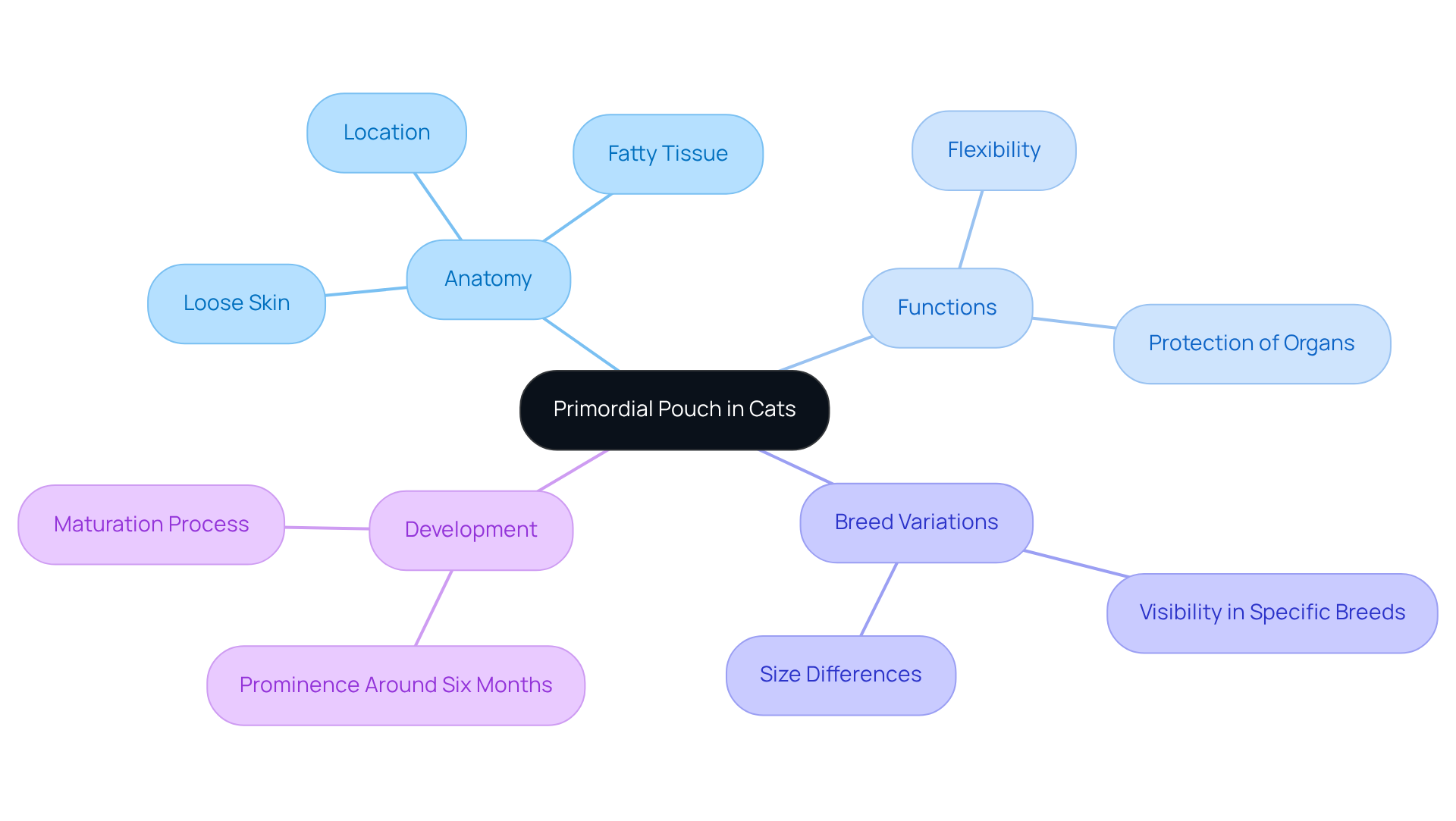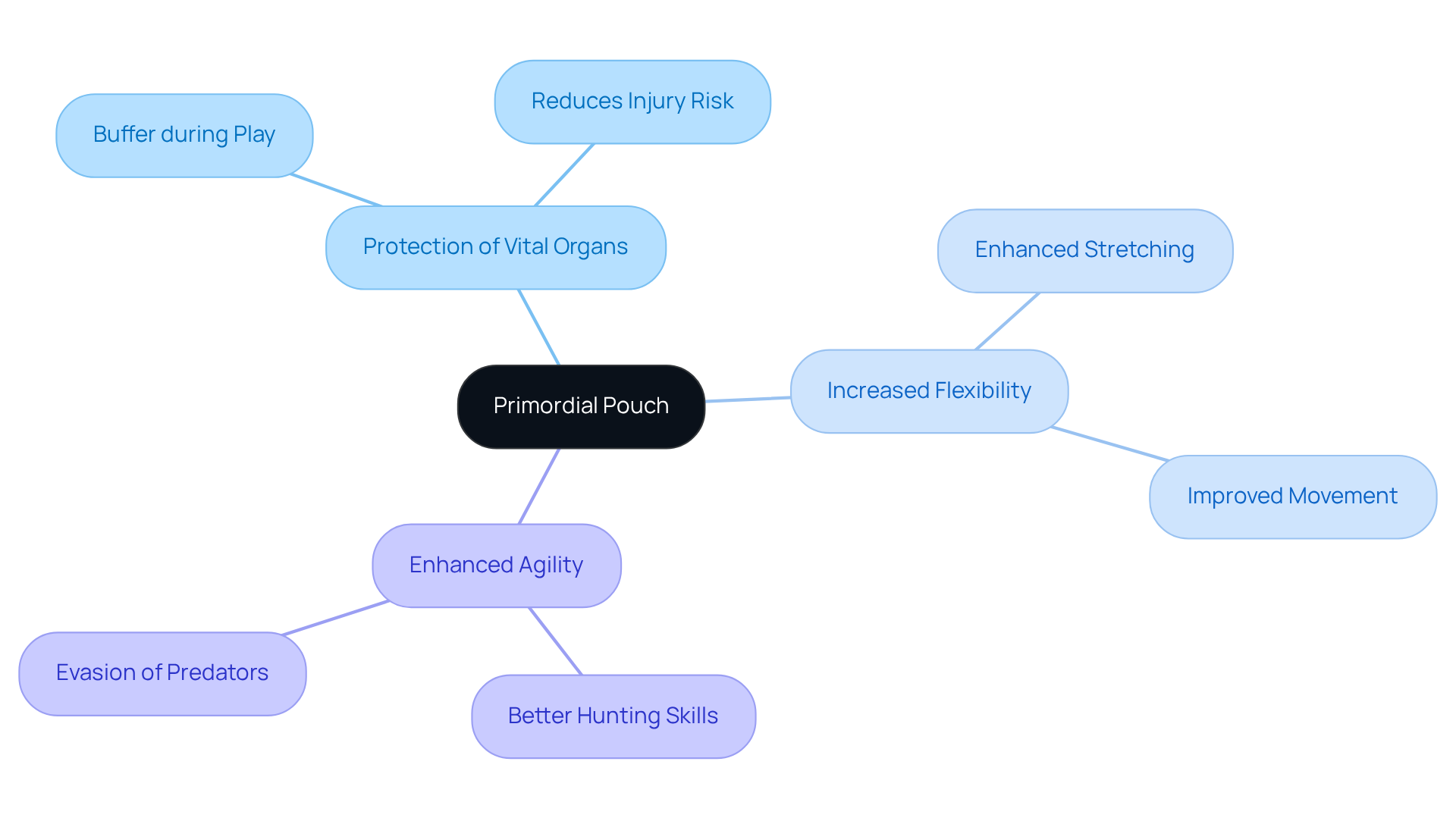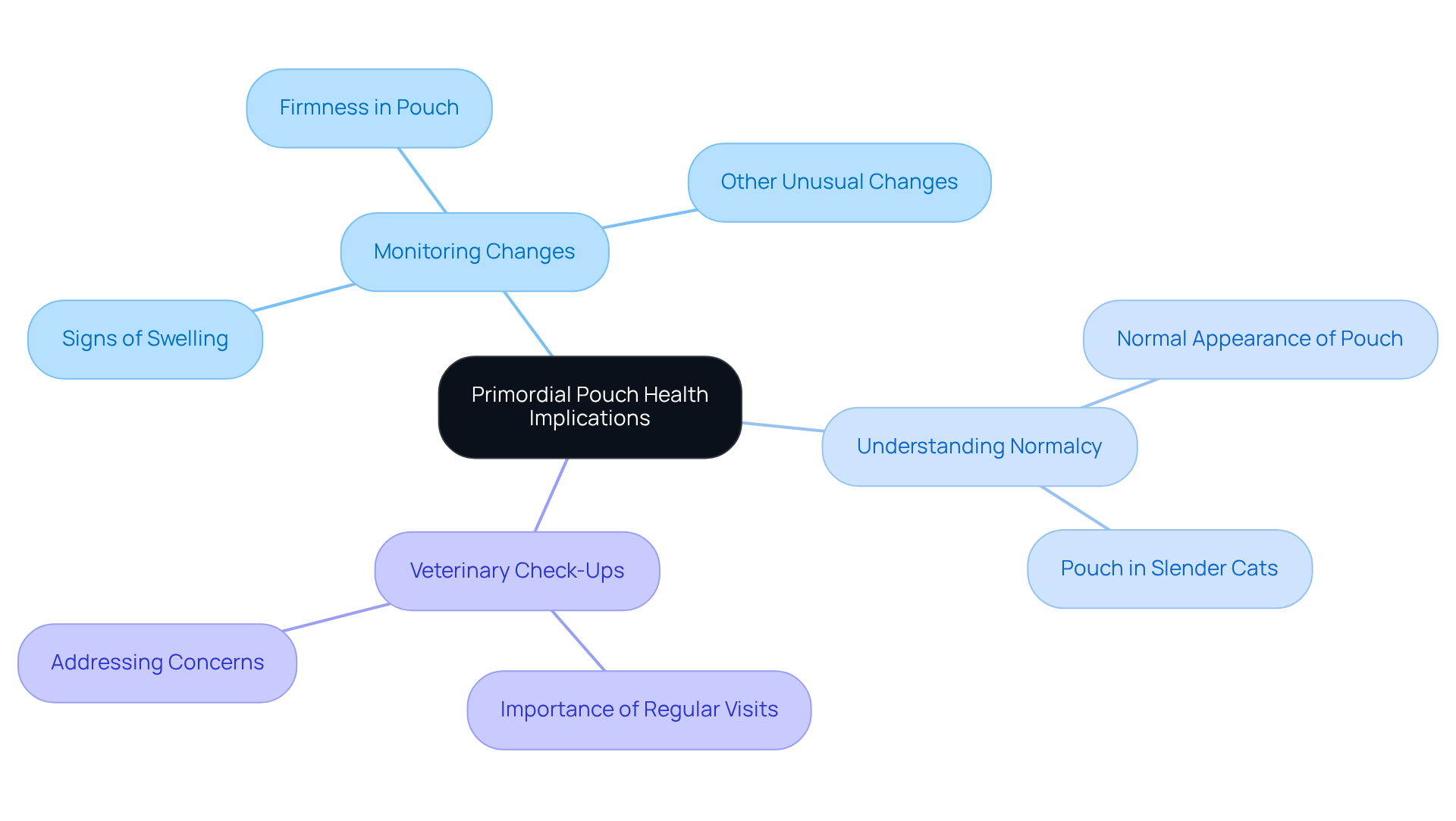What is the Cat Pouch? Understanding Its Purpose and Health Impact
Overview
The cat pouch, also known as the primordial sac, plays essential roles in safeguarding your furry family members’ internal organs and enhancing their flexibility. These functions are vital for a cat’s agility and overall survival. It’s important to understand that this anatomical feature is a normal aspect of feline biology, present in all cats.
By debunking common myths, we emphasize how crucial it is to appreciate its role in promoting a nurturing environment for your pets. Understanding these aspects not only reassures pet owners but also fosters a deeper connection with their beloved companions.
Introduction
The primordial pouch, often overlooked, plays a crucial role in the anatomy and health of your furry family members. This unique feature, a flap of loose skin and fatty tissue, not only enhances a cat’s agility but also serves protective functions that are vital for their survival. However, many pet owners have concerns and misconceptions about its appearance and implications for a cat’s health. This can lead to questions about what this anatomical characteristic truly means for your beloved pets.
What should you understand about the primordial pouch to ensure your cats thrive while dispelling the myths that cloud its significance?
Define the Primordial Pouch in Cats
The cat pouch, known as the primordial sac, is a natural anatomical characteristic found in all felines, serving as a gentle reminder of their unique biology. The cat pouch is a flap of loose skin and fatty tissue that hangs beneath the abdomen, stretching from the ribcage to the hind legs. While it may be most noticeable in adult felines, the cat pouch serves important functions, such as providing flexibility during movement and protecting vital organs.
As you observe your furry family members, you may notice that the cat pouch is more visible in specific breeds and varies in size among individual felines. Rest assured, this typical component of feline anatomy develops as these beloved animals mature, usually becoming prominent around six months of age. Understanding this feature can help you nurture a healthy environment for your pets, ensuring they thrive as they grow.

Explore the Evolutionary Purpose of the Primordial Pouch
The primordial sac is believed to have developed for several important reasons, primarily linked to the survival of our furry family members. One of its essential functions is to offer protection for vital organs during playful tussles or when cats engage in rough play. The loose skin and fatty tissue serve as a comforting buffer, significantly reducing the risk of injury to the abdomen.
Moreover, this remarkable bag enhances flexibility and range of motion, enabling cats to stretch their bodies further when running or jumping. This increased flexibility is crucial for hunting and evading potential predators, making the early-stage sac a vital evolutionary trait that boosts a cat’s agility and overall survival in the wild. By understanding these natural adaptations, we can better appreciate the unique needs of our beloved pets and create a nurturing environment for them to thrive.

Debunk Myths About the Primordial Pouch
As a loving cat owner, you may have heard various myths surrounding the feline abdominal sac that could lead to confusion. One common misconception is that only overweight cats have a noticeable abdominal flap. In truth, all cats, regardless of their weight, possess this feature. Another myth suggests that this sac only appears in spayed or neutered cats, but that’s not the case; it is a natural part of feline anatomy present in both male and female cats.
Additionally, some might worry that a visible bulge indicates a health issue. However, it’s important to understand that this is simply a typical anatomical characteristic that has no connection to obesity or poor health. Remember, your furry family members deserve to feel secure and loved, and understanding their anatomy is a step towards providing them with the nurturing environment they need.

Assess Health Implications of the Primordial Pouch
While the cat pouch is a common feature in cats, it’s essential for pet owners to be aware of its health implications. Keep an eye on your furry family member’s pouch for any unusual changes, such as sudden swelling or firmness, which might indicate underlying health issues.
Remember, having a noticeable primordial bulge does not mean your cat pouch indicates that your cat is overweight or unhealthy; even slender cats can have a cat pouch.
Regular veterinary check-ups play a crucial role in ensuring your cat’s overall well-being, allowing any concerns regarding this area to be addressed by a professional. Understanding that the primordial pouch is normal can help alleviate any unnecessary worries, fostering a nurturing environment for your beloved pet.

Conclusion
The primordial pouch, often overlooked, is an essential part of your furry family member’s anatomy that serves multiple purposes beyond mere appearance. This unique feature, characterized by a flap of loose skin and fatty tissue, plays a significant role in protecting vital organs and enhancing a cat’s agility. Understanding this aspect of your cat’s biology not only fosters appreciation for their evolutionary adaptations but also encourages responsible pet care in a nurturing environment.
As we explore the cat pouch, key insights emerge regarding its evolutionary significance, common myths, and health implications. It’s important to clarify that all cats possess this pouch, regardless of weight or whether they have been spayed or neutered. Recognizing that a prominent pouch does not equate to health issues is crucial for pet owners, as it alleviates unnecessary concerns and promotes a supportive atmosphere for your beloved companions.
Ultimately, being informed about the primordial pouch empowers you to provide better care for your pets. Regular veterinary check-ups, awareness of any changes, and dispelling myths surrounding this anatomical feature are vital steps in ensuring your cat’s health and happiness. Embracing this knowledge not only enhances the bond between you and your feline friend but also underscores the importance of understanding and respecting the natural characteristics that make each cat unique.
Frequently Asked Questions
What is the primordial pouch in cats?
The primordial pouch, also known as the cat pouch, is a natural anatomical characteristic found in all felines. It is a flap of loose skin and fatty tissue that hangs beneath the abdomen, stretching from the ribcage to the hind legs.
What are the functions of the primordial pouch?
The primordial pouch serves important functions such as providing flexibility during movement and protecting vital organs.
When does the primordial pouch become noticeable in cats?
The primordial pouch typically becomes prominent around six months of age as the cats mature.
Does the size of the primordial pouch vary among cats?
Yes, the size of the primordial pouch can vary among individual felines and may be more visible in specific breeds.
Why is it important to understand the primordial pouch in cats?
Understanding the primordial pouch can help pet owners nurture a healthy environment for their cats, ensuring they thrive as they grow.

